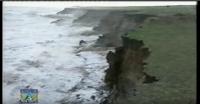Blackwater Estuary MCZ faces double challenge from Bradwell nuclear power station
The Blackwater, Crouch, Roach and Colne Estuaries Marine Conservation Zone in Essex (see map below) was designated a MCZMCZ Marine Conservation Zone in December 2013 on account, primarily, of its native oyster beds. The MCZ incorporates the Colne Estuary SPASPA Special Protection Areas (SPAs) are strictly protected sites classified in accordance with Article 4 of the EC Birds Directive, which came into force in April 1979. They are classified for rare and vulnerable birds (as listed on Annex I of the Directive), and for regularly occurring migratory species. (Colchester), the Blackwater SPA (Maldon) and the Crouch and Roach SPA (Burnham-on-Crouch/Rochford), as well as the Essex Estuaries Special Area of Conservation (SACSAC Special Areas of Conservation) and other SPA designations (Dengie and Foulness). At the head of the Blackwater Estuary lies the Bradwell Nuclear Power Station (its Magnox reactors are no longer operational, and it is the site for a proposed new build Chinese-designed nuclear reactor).

The company which owns the old nuclear power station, Magnox Limited, is in the process of decommissioning it. Part of this process is finding a repository (final home) for radioactive fuel element debris (known as FED) arising from the days when the power station was running. This is largely radioactive metal which was originally part of the fuel rods, but which remained on site when the spent fuel rods themselves were sent to Sellafield in Cumbria. As a part of the present decommissioning process, Magnox Ltd now has to decide what to do with this FED material.
Two options are available to Magnox Ltd. Either to encase the FED radioactive materials in concrete and transport to Sellafield; or, dissolve the FED (radioactive metals) in nitric acid, extract the radioactive materials by means of precipitation from the solution and then send this material (now reduced in bulk from its original FED condition) to Sellafield. The Magnox company has elected for the second of these two options, and has obtained a licence to design and implement the dissolution process.
One consequence of the dissolution option (dissolving the FED material in nitric acid) is that it produces a liquid waste stream. This cannot be transported to Sellafield, and therefore has to be discharged from Bradwell into the Blackwater estuary, and hence the Blackwater, Colne, Roach and Crouch MCZ.
The pH of this liquid waste stream will be made alkaline, and will be filtered for radioactive materials. However the waste liquid will be heavier that the water column into which it will be discharged (i.e. it will sink and merge with the water on the estuary bed) and it will still contain “trace” radioactive materials.
Magnox Limited has been perfecting the dissolution process since 2014 when it first obtained a licence to discharge the waste liquid into the estuary, and has now applied for a 24 months extension to this discharge licence to enable it to complete the full dissolution (treatment) of the FED material which it holds at Bradwell.
Marinet has commented to the Environment Agency, the licensing authority, on the new permit application by Magnox Ltd.
Marinet sees a number of problems with the new permit application. Firstly, the discharge is into the Blackwater MCZ. Therefore it is essential that the discharges do not damage the integrity of this MCZ and its oyster beds. Secondly, whilst the permit is for the discharge of radioactivity (and also heavy metals) the application does not identify the range of radionuclides to be discharged or the quantity. Thirdly, there is no risk assessment regarding the impact of these discharges and their radioactivity on the oyster beds. Fourthly, there is no risk assessment on the oyster shell fishermen or other commercial and recreational users of the estuary. The impact of these discharges could be severe, temporary or inconsequential. The problem with the permit application is that it is not possible to determine which of these outcomes is the most likely.
Further complications may also exist in the future for the Blackwater, Colne, Roach and Crouch MCZ as a result of the Bradwell nuclear power station.
One of these is that if the dissolution process for Bradwell FED material is deemed successful, then the Bradwell site may receive FED material from Sizewell (Suffolk) and Dungeness (Kent) for similar treatment. The Magnox company has said that this is not part of its present plans, but is it part of their future plans?
Another complication for the Blackwater, Colne, Roach and Crouch Estuary MCZ is that the UK Government is looking to build new nuclear power stations, and has identified Bradwell as a priority location Bradwell has been linked with the building of a Chinese designed and built nuclear power station, see Guardian article.
Marinet believes there are currently serious challenges to the integrity of the MCZ and its oyster beds. Is the MCZ being properly respected? Bradwell nuclear power station has brought these questions to the fore.


























